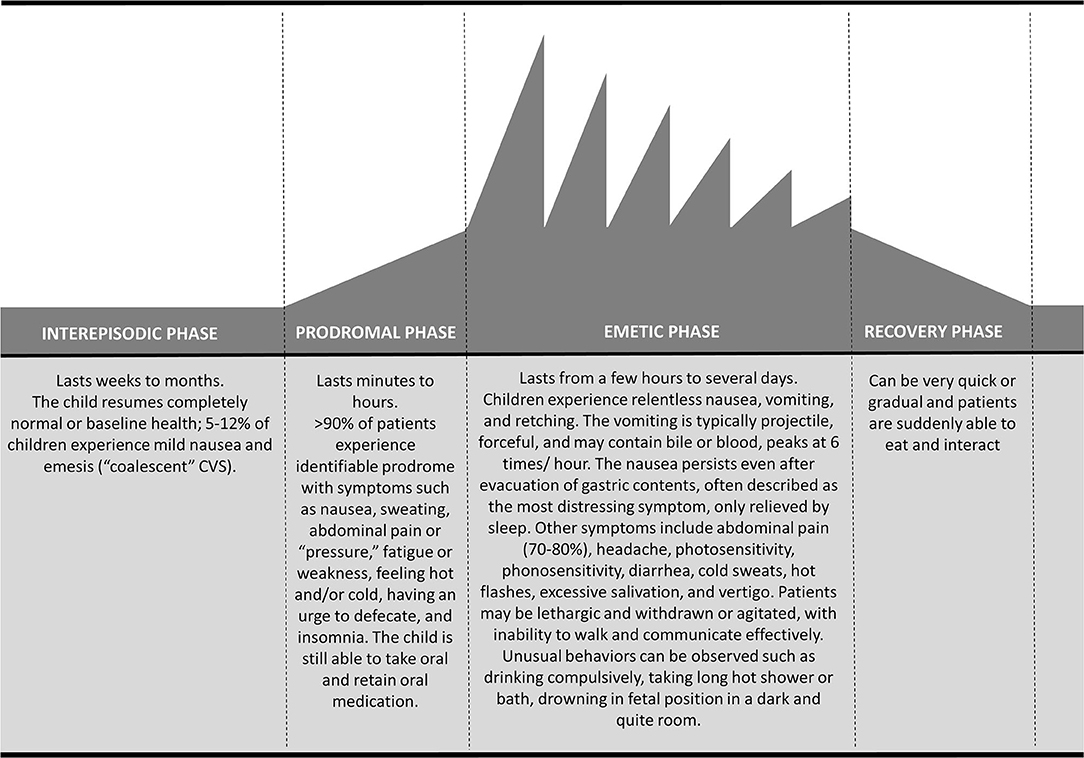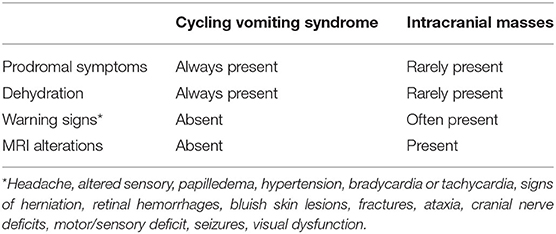Cyclic Vomiting Syndrome, often abbreviated as CVS, is a condition that causes repeated episodes of severe nausea and vomiting. These episodes can last for hours or even days, significantly impacting the quality of life for those affected. This guide will explore the symptoms, triggers, and care strategies associated with this complex condition.

Understanding Cyclic Vomiting Syndrome
Cyclic Vomiting Syndrome is a functional gastrointestinal disorder characterized by recurrent episodes of intense nausea and vomiting. The episodes are often unpredictable and can occur without any apparent cause. While the exact cause of this condition remains unclear, researchers believe it may be linked to abnormalities in the brain-gut connection, mitochondrial dysfunction, or genetic predispositions.
Individuals with this syndrome often experience periods of wellness between episodes, during which they feel completely normal. However, when an episode strikes, it can be debilitating, requiring medical intervention in some cases.
Who Is Affected?
- Children are more commonly diagnosed with this condition than adults, although it can affect individuals of all ages.
- Studies suggest that the syndrome may have a higher prevalence among people with a family history of migraines.
- Women and men are equally likely to develop the condition, but women may experience more frequent or severe episodes.
Symptoms of Cyclic Vomiting Syndrome
The hallmark symptom of this condition is the sudden onset of severe nausea and vomiting. These episodes typically follow a pattern, occurring at regular intervals, such as every few weeks or months. Below are the key symptoms associated with this condition:
1. Nausea and Vomiting
The most prominent symptom is uncontrollable nausea followed by frequent vomiting. During an episode, an individual may vomit multiple times per hour, leading to dehydration and exhaustion.
2. Abdominal Pain
Many individuals experience intense abdominal pain during episodes. This pain can range from mild discomfort to severe cramping, making it difficult to eat, sleep, or perform daily activities.
3. Fatigue and Weakness
The physical toll of repeated vomiting leaves individuals feeling extremely fatigued and weak. This exhaustion can persist even after the episode has ended.
4. Sensitivity to Light and Sound
Some people report heightened sensitivity to light and sound during episodes, similar to symptoms experienced during a migraine. This can make it challenging to remain in brightly lit or noisy environments.
5. Salivation and Sweating
In the early stages of an episode, increased salivation and sweating are common. These symptoms may serve as warning signs that an episode is about to begin.
Triggers of Cyclic Vomiting Syndrome
While the exact cause of this condition is unknown, certain factors are believed to trigger episodes. Identifying and avoiding these triggers can help reduce the frequency and severity of episodes.
1. Emotional Stress
Stressful situations, whether related to work, school, or personal life, can act as a trigger for episodes. Anxiety and emotional distress are known to exacerbate symptoms in many individuals.
2. Infections and Illnesses
Viral infections, such as the common cold or flu, can sometimes trigger an episode. Even minor illnesses may disrupt the body’s balance and lead to an onset of symptoms.
3. Dietary Factors
Certain foods and beverages may act as triggers for some individuals. Common culprits include:
- High-fat or greasy foods
- Chocolate
- Caffeinated drinks like coffee or soda
- Alcohol
Keeping a food diary can help identify specific dietary triggers.
4. Sleep Deprivation
Lack of adequate sleep or disruptions to sleep patterns can increase the likelihood of an episode. Maintaining a consistent sleep schedule is crucial for managing this condition.
5. Physical Exhaustion
Overexertion or intense physical activity without proper rest can also trigger episodes. Balancing activity levels with sufficient recovery time is essential.
6. Hormonal Changes
In women, hormonal fluctuations during menstruation or pregnancy may influence the frequency or severity of episodes. Understanding these patterns can aid in better management of the condition.
Diagnosing Cyclic Vomiting Syndrome
Diagnosing this condition can be challenging due to its episodic nature and the absence of visible abnormalities in standard medical tests. Healthcare providers rely on a combination of clinical evaluation, patient history, and exclusion of other conditions to make a diagnosis.
Steps Involved in Diagnosis
- Medical History: Doctors will ask detailed questions about the frequency, duration, and characteristics of episodes. They may also inquire about family history, particularly regarding migraines.
- Physical Examination: A thorough physical exam helps rule out other potential causes of nausea and vomiting, such as gastrointestinal infections or structural abnormalities.
- Laboratory Tests: Blood tests, urine analysis, and imaging studies (such as ultrasounds or endoscopies) may be conducted to exclude other conditions.
- Diagnostic Criteria: Specific criteria, such as the Rome IV criteria, are used to classify the condition based on symptom patterns and episode frequency.
Treatment and Care Strategies
While there is no cure for this condition, several treatment options and care strategies can help manage symptoms and improve quality of life.
1. Medications
Medications play a crucial role in both preventing episodes and alleviating symptoms during an episode.
- Preventive Medications: These include anti-seizure drugs, antidepressants, and medications traditionally used to treat migraines. They aim to reduce the frequency of episodes.
- Acute Treatment: Anti-nausea medications, pain relievers, and intravenous fluids are often administered during an episode to provide relief and prevent complications like dehydration.
2. Lifestyle Modifications
Making certain lifestyle changes can significantly reduce the frequency and severity of episodes.
- Dietary Adjustments: Eating small, frequent meals and avoiding known dietary triggers can help maintain digestive health.
- Stress Management: Techniques such as meditation, yoga, and cognitive-behavioral therapy can help manage stress and minimize its impact on the body.
- Regular Sleep Patterns: Establishing a consistent sleep routine ensures the body gets adequate rest, reducing the risk of triggering an episode.
3. Hydration
Staying hydrated is critical, especially during episodes when vomiting can lead to significant fluid loss. Oral rehydration solutions or intravenous fluids may be necessary in severe cases.
4. Support Networks
Connecting with support groups or online communities can provide emotional support and practical advice for managing the condition. Sharing experiences with others who understand the challenges can be incredibly empowering.
When to Seek Medical Attention
While many episodes can be managed at home, certain situations require immediate medical attention. These include:
- Severe dehydration, indicated by dry mouth, dizziness, or reduced urination
- Persistent vomiting lasting more than 24 hours
- Blood in vomit or stool
- Signs of infection, such as fever or chills
- Severe abdominal pain that does not improve with medication
Living with Cyclic Vomiting Syndrome
Living with this condition requires patience, resilience, and a proactive approach to self-care. By understanding the symptoms, identifying triggers, and implementing effective care strategies, individuals can take control of their health and minimize the impact of episodes on their daily lives.
Education and awareness are also vital components of managing this condition. Working closely with healthcare providers to develop a personalized treatment plan ensures that each individual receives the best possible care tailored to their unique needs.





